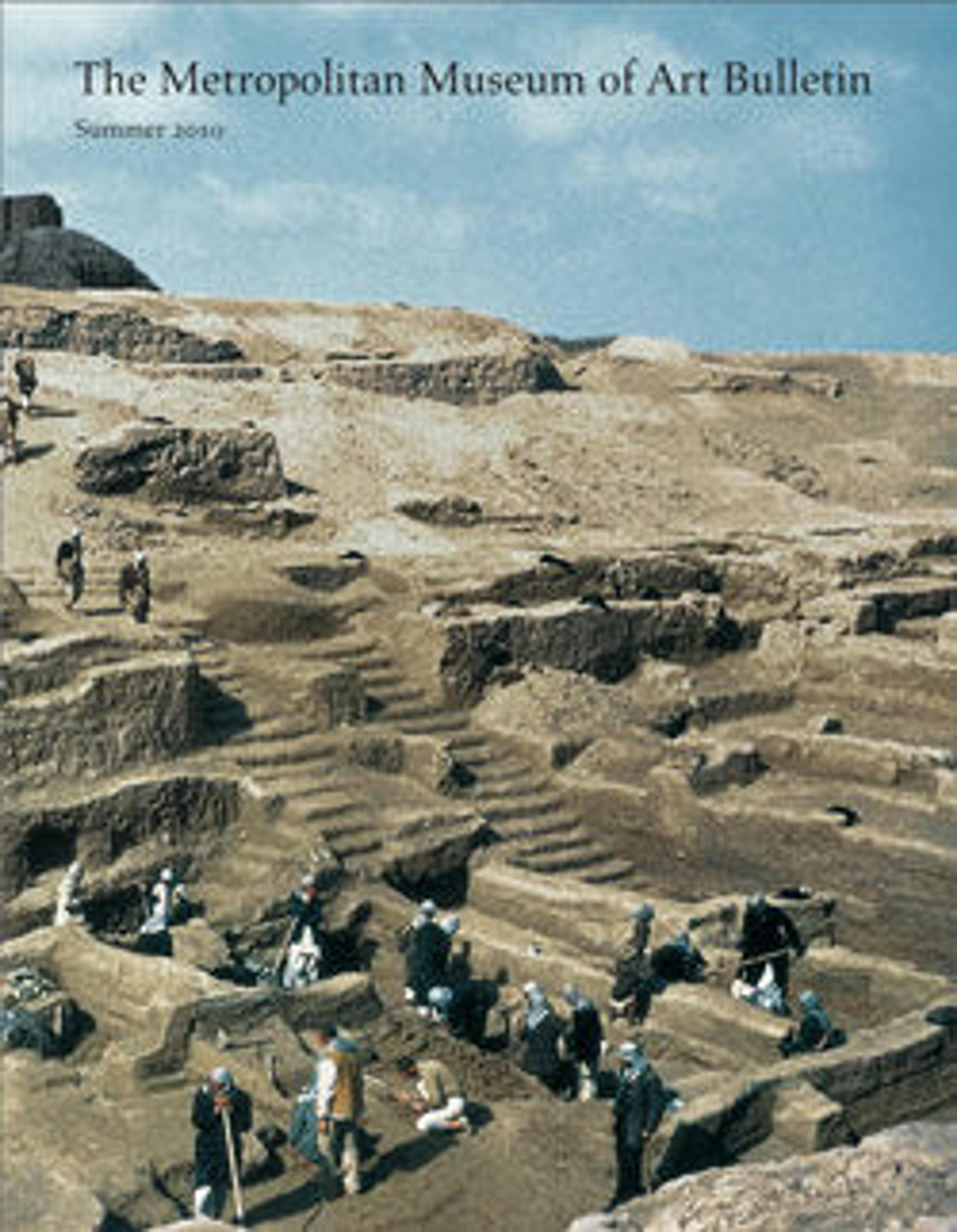Wall panel with wings and a Pahlavi device encircled by pearls
Beginning in the 5th century, monograms became popular motifs used in the mold-made stucco wall panels that decorated the palaces and houses of the Sasanian elite, and many had symbolic meanings. This panel from the iwan (vaulted hall) of a large house at Umm ez-Za’tir, near the Taq-i Kisra at Ctesiphon, features a group of letters in the Persian script and a lunar crescent above symmetrical feathered wings and encircled by pearls: the motif very likely had protective significance. Half palmettes in the corners would have formed a complete design when this panel was placed within an arrangement with other similar ones. An identical panel is in Berlin in the Museum für Islamische Kunst, Staatliche Museen zu Berlin.
Artwork Details
- Title: Wall panel with wings and a Pahlavi device encircled by pearls
- Period: Sasanian
- Date: ca. 6th century CE
- Geography: Mesopotamia, Ctesiphon
- Culture: Sasanian
- Medium: Stucco
- Dimensions: 15 3/4 × 16 5/16 × 2 1/16 in. (40 × 41.5 × 5.3 cm)
- Credit Line: Rogers Fund, 1932
- Object Number: 32.150.48
- Curatorial Department: Ancient West Asian Art
More Artwork
Research Resources
The Met provides unparalleled resources for research and welcomes an international community of students and scholars. The Met's Open Access API is where creators and researchers can connect to the The Met collection. Open Access data and public domain images are available for unrestricted commercial and noncommercial use without permission or fee.
To request images under copyright and other restrictions, please use this Image Request form.
Feedback
We continue to research and examine historical and cultural context for objects in The Met collection. If you have comments or questions about this object record, please contact us using the form below. The Museum looks forward to receiving your comments.
